Features of national designers (in pictures). Part 2
Designers of various countries have a “national imprint” - when for purely marketing, and when for historical reasons. At the same time, culture, art or achievements of one country often serve as inspiration, and even a solid basis for a commercial product from another part of the world. It was a brief retelling of the first release with the designers of Japan, Russia and three more countries.
Go to the second:

')
Take five more countries from different continents and see what is there with conventional and digital designers - in an attempt to install, and could 600 identical details affect the local development of a techie?
Two countries from this region have well-known designers.
62 Circuits for everyone. This is Denmark - the birthplace of one of the most popular designers of all times and peoples: Lego. According to statistics, since 1949, the company has produced so many plastic blocks that there are 62 pieces per each inhabitant of the planet. Already figured out what to collect?
Lego Empire is active with its products and in the digital world. These are mainly browser-based games with characters from branded sets. But come across amusement and partially-educational products.

For example, there is a minimalist online toy that teaches you to make posters with the heroes of the Star Wars universe.
In fact, this is the simplest digital designer that helps to take the first steps in web design (so the option “play with fonts” is blocked).
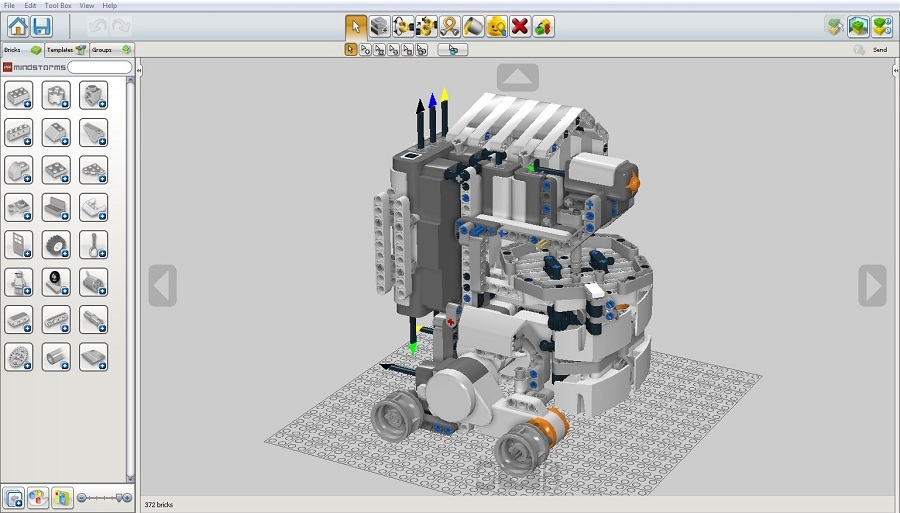
But the main achievement in the field of digital design in Lego, it seems, was made 12 years ago by releasing Digital Designer - a desktop application for 3D modeling, which during its existence managed to cover the path from the first blocks to Mindstorms. Unfortunately, the project this year stopped funding. Updates will not be.
But the developers managed to release a version for Mac. And continue to distribute the application for free.
130 years of homogeneity. As you know, the creator of Lego began with the release of wooden toys and cubes, and then “changed” them with plastic. But in neighboring Sweden, people just went one way for 130 years - and built the largest production of wooden toys in the world: Brio.
In any region, this company is best known for its wooden railways - this is their most popular product since the late 1950s, which allowed the Swedes to enter international markets. But almost as many years on the shelves can be found Mec designers from Brio.
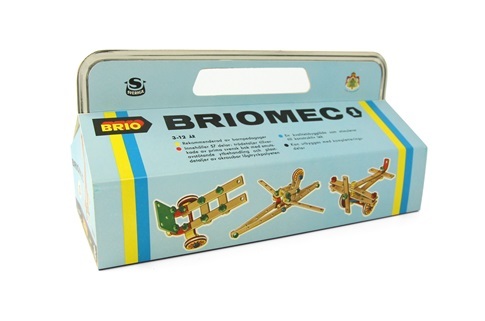
As you can see, the concept of their constructor has not changed much in half a century. Above - a set of 1963. Below - from 2015.

In Mec, there is something from the British “Meccano”, something from the Austrian “Matador” - designers that have existed on the market since the beginning of the 20th century. But its style and traced.
But the Danes used to copy cleaned up.
Ctrl-C, Ctrl-V. Even in pre-war times, a Tekno designer was produced in Denmark, very similar to the same “Meccano”. As a result, the manufacturer has gone towards the release of finished models of cars, but on the Internet you can still buy those original designers.

In the fifties of the 20th century, the Danes produced their own analogue of the Austrian "Matador".

And although the Connector package says “a set from a Danish architect,” the picture shows a source of inspiration.
Scandinavian style. First story: 600 identical parts. In the twenty-first century in Denmark, designers continue to create. And more and more inclined to minimalism - such “Scandinavian style”.
As an example - plastic Plus-Plus. This is the designer of one piece - exactly the same elements put up to 600 pieces in a box and given to children.

But such restrictions will not stop the imagination of the child — rather, they will rather develop it quite well.
Scandinavian style. The second story: a little zen. In this place, almost every adult man will say: “Wait, somewhere I have already seen a bunch of identical parts.” Yes - in the minimalist-Scandinavian furniture sets from IKEA.

Also a kind of constructor.
But not only "ordinary" designers Scandinavia is famous. Denmark has a fairly successful overseas site builder - SimpleSite. Service developers offer exactly what they promise in the title: a “simple website” and the simplest editor to it - with traditional Scandinavian minimalism. Interestingly, the designer grew out of a student project that was born in 2003 and bore an undeniable name.

And what about Sweden? From the point of view of well-known IT projects with a design start - sparsely.
So if anyone remembers the world-famous Internet projects from Sweden - in addition to Spotify and SoundCloud - write in the comments, issue a prize in a personal note.
And here is an interesting example of how the history and demography-geography of a state develops engineering thought and pushes it outside the country.
Learn to think fast. Israel is a country that is almost always in an alarming environment. Hence, the almost universal service in the army, and the need to quickly think in “field conditions”. Therefore, the project MegaDo uses the principle of the designer, so that children learn to set up a tent:

But, of course, the set is suitable for many things - here you can find a football goal, a boat, and a car ...

In general, an excellent designer for the street - of which a little .
We learn to think. MegaDo constructor is interesting, but it doesn’t really develop. In the segment of developmental designers - other players. Since the 1990s, Interstar has been offering sets of “geometric constructors” and, as can be seen from the picture, it feels good in foreign markets:

Interstar is designed according to the brush principle - for parts, the surface is not solid, but consists of plates of the same thickness with slots between them.
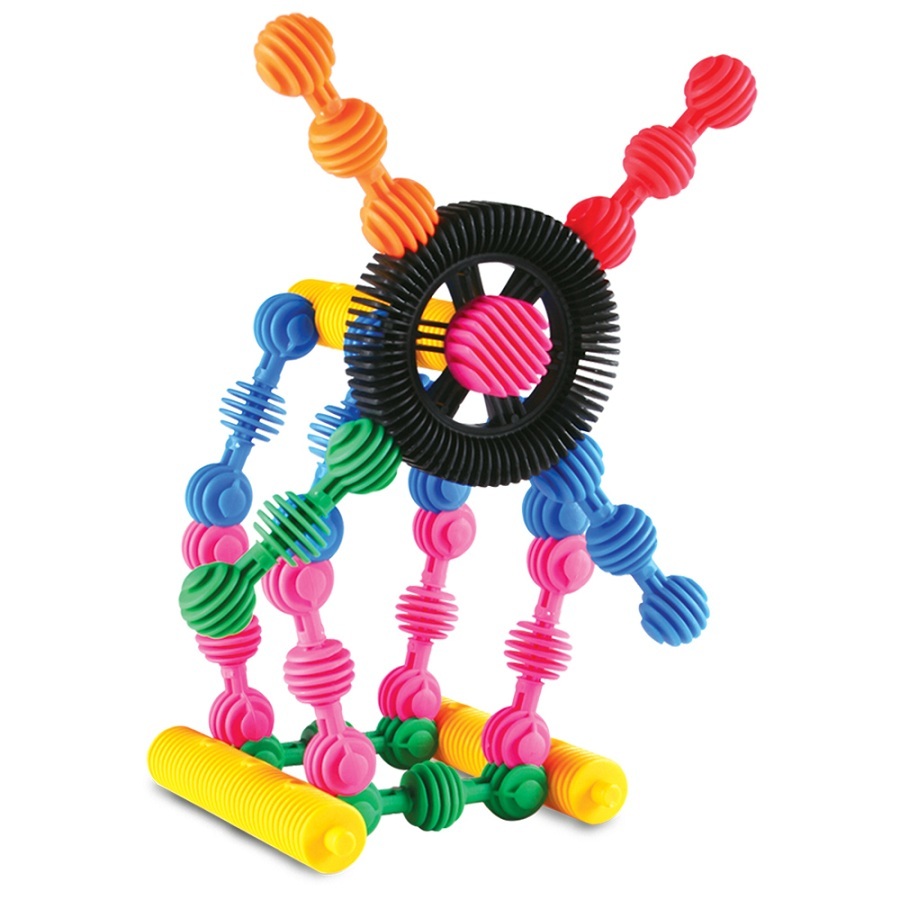
Thanks to this system, parts can be connected at almost any angle, which allows you to create extremely interesting designs.
Survive and exit. The Israeli Internet industry is attracting a lot of attention today. The capacity of the domestic market is small, but if the project is launched here and survived, it goes and tries to conquer the world. One of the stories of such a plan is the Wix website builder, which went public in the United States.

Today, they do not stop at what has been accomplished, and like us at uKit, they are working on a designer who builds websites for people (with AI and not only).
Programmers from North America wrote so much, and designers from inventors from the United States regularly found themselves in our reviews , which will emphasize only a few interesting coincidences and facts.
Without crutches. Imagine a plastic constructor with no extra mounts - you say Lego. And if he is flexible?

“Why does“ Meccano ”,“ Matador ”and their plastic counterparts of fastening parts - after all, these are some kind of crutches,” probably the creator of the designer Zoob thought somehow. In his invention, plastic parts are connected and held together without the aid of screws, nuts or pins. At the same time, the fastening system allows the pieces of the structure to be very flexible - the manufacturer speaks of "25 types of connections that imitate almost all types of natural fasteners."

If you buy a large box of parts, you can collect anything, and the models will be interesting and detailed.

But the California designer Wedgits suggests not to connect the parts at all, but simply to put on each other from different angles.

The geometry of the parts is based on diamonds and octahedra. Initially, the designer was invented that children study the concepts of horizontal, vertical and symmetry without step-by-step instructions.
STEM and the American Dream . Two brothers-geek, having walked at a wedding, come up with something that four major players in the market reject and deride. In a few years, their product has conquered 25 countries.
This is the story of K'Nex - engineering and construction designer based on flexible plastic rods, which has been produced since 1992 and allows you to build at least your own Hyperloop.

This constructor is directly positioned as a product for people from all over the world who believe in STEM education.
Melting Pot. The United States is an important market for the work of a huge number of Internet companies, and site designers are no exception.
Some projects are partially moved from other countries - to position themselves as global companies with headquarters in California. Others are created in the USA, but by immigrant forces from around the world.
Weebly's story is about how the famous principle of the “melting pot of nations” worked in full force. David Rusenko (born in Paris, the son of Eastern Europeans), Chris Fanini and Dan Veltry - the names speak for themselves. For 10 years, the project scored 30 million registrations worldwide.

True, Russia got poorly translated landing pages from international expansion, but in principle we are not the main market for most foreign IT projects. In Russia, the main market share is occupied by local players.
In the past, the review of this country was France.
Honestly, we almost did not manage to find designers from Argentina. With the exception of history, as in the 1960s, they released their analogue Lego - Rasti.
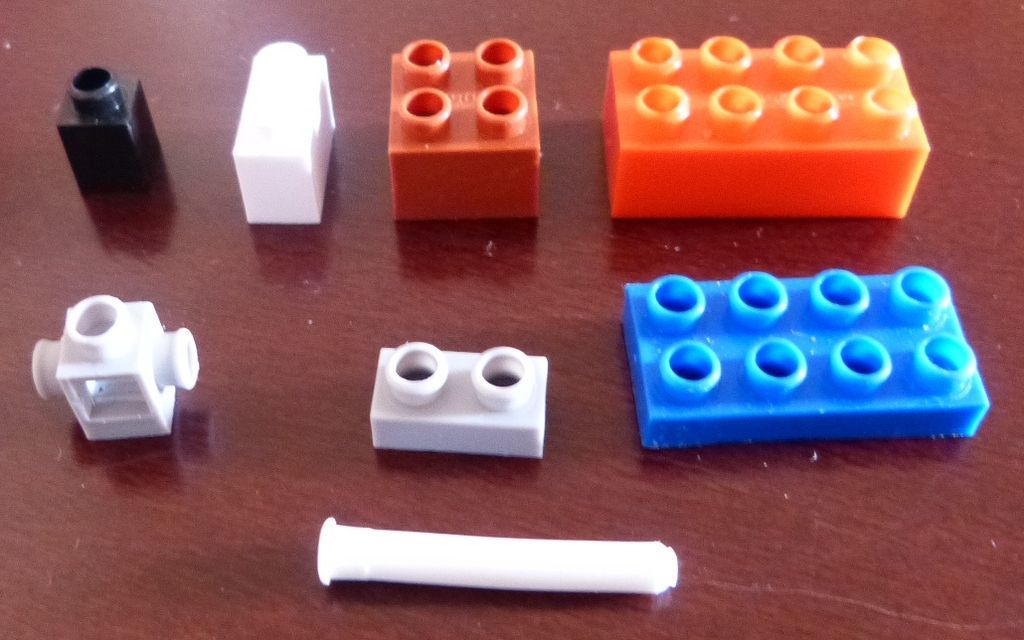
For the rest, over the years it has become only more ctrl + c / ctrl + v. As an example, here is a local copy of Magformers.
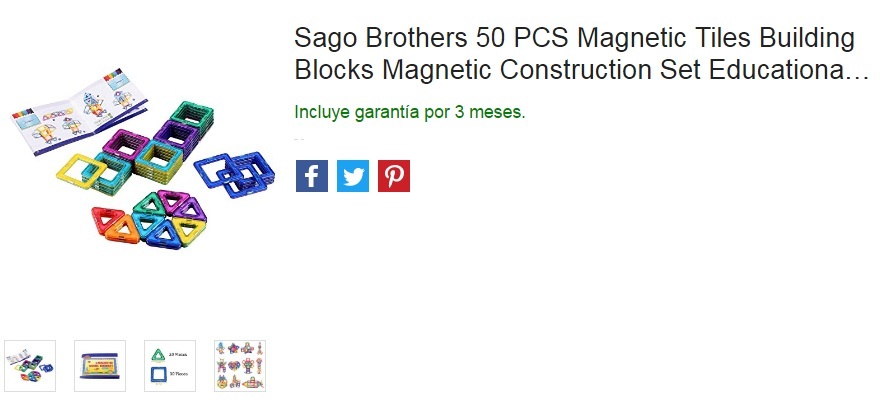
But - Argentine developers are in demand throughout South America and create services that conquer the region.
***
Tl; DR. Obviously, any constructors are a way to push a person in the right direction, no more. If he wants it. For example, we, with our constructor, are trying to help adult “ordinary” entrepreneurs to develop in the Internet environment.
PS Designers will pursue you all my life. And with the development of technology, as well as with age, they will increasingly take on digital form.
So next time we will describe how digital designers are created for different applications, and take a look at the teams that are on the other side of development.
Go to the second:

')
Take five more countries from different continents and see what is there with conventional and digital designers - in an attempt to install, and could 600 identical details affect the local development of a techie?
6. Scandinavia: minimalism with a touch of zen
Two countries from this region have well-known designers.
62 Circuits for everyone. This is Denmark - the birthplace of one of the most popular designers of all times and peoples: Lego. According to statistics, since 1949, the company has produced so many plastic blocks that there are 62 pieces per each inhabitant of the planet. Already figured out what to collect?
Lego Empire is active with its products and in the digital world. These are mainly browser-based games with characters from branded sets. But come across amusement and partially-educational products.

For example, there is a minimalist online toy that teaches you to make posters with the heroes of the Star Wars universe.
In fact, this is the simplest digital designer that helps to take the first steps in web design (so the option “play with fonts” is blocked).

But the main achievement in the field of digital design in Lego, it seems, was made 12 years ago by releasing Digital Designer - a desktop application for 3D modeling, which during its existence managed to cover the path from the first blocks to Mindstorms. Unfortunately, the project this year stopped funding. Updates will not be.
But the developers managed to release a version for Mac. And continue to distribute the application for free.
130 years of homogeneity. As you know, the creator of Lego began with the release of wooden toys and cubes, and then “changed” them with plastic. But in neighboring Sweden, people just went one way for 130 years - and built the largest production of wooden toys in the world: Brio.
In any region, this company is best known for its wooden railways - this is their most popular product since the late 1950s, which allowed the Swedes to enter international markets. But almost as many years on the shelves can be found Mec designers from Brio.

As you can see, the concept of their constructor has not changed much in half a century. Above - a set of 1963. Below - from 2015.

In Mec, there is something from the British “Meccano”, something from the Austrian “Matador” - designers that have existed on the market since the beginning of the 20th century. But its style and traced.
But the Danes used to copy cleaned up.
Ctrl-C, Ctrl-V. Even in pre-war times, a Tekno designer was produced in Denmark, very similar to the same “Meccano”. As a result, the manufacturer has gone towards the release of finished models of cars, but on the Internet you can still buy those original designers.

In the fifties of the 20th century, the Danes produced their own analogue of the Austrian "Matador".

And although the Connector package says “a set from a Danish architect,” the picture shows a source of inspiration.
Scandinavian style. First story: 600 identical parts. In the twenty-first century in Denmark, designers continue to create. And more and more inclined to minimalism - such “Scandinavian style”.
As an example - plastic Plus-Plus. This is the designer of one piece - exactly the same elements put up to 600 pieces in a box and given to children.

But such restrictions will not stop the imagination of the child — rather, they will rather develop it quite well.
Scandinavian style. The second story: a little zen. In this place, almost every adult man will say: “Wait, somewhere I have already seen a bunch of identical parts.” Yes - in the minimalist-Scandinavian furniture sets from IKEA.

Translation just in case
Left: How people spend time returning from IKEA:
* green - collect furniture
* blue - disassemble the furniture, because something went wrong
* orange - joke about the perverted names of furniture sets
* red - curse everything
Right: “What if Lego is just a preparation for assembling furniture from IKEA? "
* green - collect furniture
* blue - disassemble the furniture, because something went wrong
* orange - joke about the perverted names of furniture sets
* red - curse everything
Right: “What if Lego is just a preparation for assembling furniture from IKEA? "
Also a kind of constructor.
But not only "ordinary" designers Scandinavia is famous. Denmark has a fairly successful overseas site builder - SimpleSite. Service developers offer exactly what they promise in the title: a “simple website” and the simplest editor to it - with traditional Scandinavian minimalism. Interestingly, the designer grew out of a student project that was born in 2003 and bore an undeniable name.

And what about Sweden? From the point of view of well-known IT projects with a design start - sparsely.
So if anyone remembers the world-famous Internet projects from Sweden - in addition to Spotify and SoundCloud - write in the comments, issue a prize in a personal note.
7. Israel: ordered to survive
And here is an interesting example of how the history and demography-geography of a state develops engineering thought and pushes it outside the country.
Learn to think fast. Israel is a country that is almost always in an alarming environment. Hence, the almost universal service in the army, and the need to quickly think in “field conditions”. Therefore, the project MegaDo uses the principle of the designer, so that children learn to set up a tent:

But, of course, the set is suitable for many things - here you can find a football goal, a boat, and a car ...

In general, an excellent designer for the street - of which a little .
We learn to think. MegaDo constructor is interesting, but it doesn’t really develop. In the segment of developmental designers - other players. Since the 1990s, Interstar has been offering sets of “geometric constructors” and, as can be seen from the picture, it feels good in foreign markets:

Interstar is designed according to the brush principle - for parts, the surface is not solid, but consists of plates of the same thickness with slots between them.

Thanks to this system, parts can be connected at almost any angle, which allows you to create extremely interesting designs.
Survive and exit. The Israeli Internet industry is attracting a lot of attention today. The capacity of the domestic market is small, but if the project is launched here and survived, it goes and tries to conquer the world. One of the stories of such a plan is the Wix website builder, which went public in the United States.

Today, they do not stop at what has been accomplished, and like us at uKit, they are working on a designer who builds websites for people (with AI and not only).
8. United States: Melting Pot
Programmers from North America wrote so much, and designers from inventors from the United States regularly found themselves in our reviews , which will emphasize only a few interesting coincidences and facts.
Without crutches. Imagine a plastic constructor with no extra mounts - you say Lego. And if he is flexible?

“Why does“ Meccano ”,“ Matador ”and their plastic counterparts of fastening parts - after all, these are some kind of crutches,” probably the creator of the designer Zoob thought somehow. In his invention, plastic parts are connected and held together without the aid of screws, nuts or pins. At the same time, the fastening system allows the pieces of the structure to be very flexible - the manufacturer speaks of "25 types of connections that imitate almost all types of natural fasteners."

If you buy a large box of parts, you can collect anything, and the models will be interesting and detailed.

But the California designer Wedgits suggests not to connect the parts at all, but simply to put on each other from different angles.

The geometry of the parts is based on diamonds and octahedra. Initially, the designer was invented that children study the concepts of horizontal, vertical and symmetry without step-by-step instructions.
STEM and the American Dream . Two brothers-geek, having walked at a wedding, come up with something that four major players in the market reject and deride. In a few years, their product has conquered 25 countries.
This is the story of K'Nex - engineering and construction designer based on flexible plastic rods, which has been produced since 1992 and allows you to build at least your own Hyperloop.

This constructor is directly positioned as a product for people from all over the world who believe in STEM education.
Melting Pot. The United States is an important market for the work of a huge number of Internet companies, and site designers are no exception.
Some projects are partially moved from other countries - to position themselves as global companies with headquarters in California. Others are created in the USA, but by immigrant forces from around the world.
Weebly's story is about how the famous principle of the “melting pot of nations” worked in full force. David Rusenko (born in Paris, the son of Eastern Europeans), Chris Fanini and Dan Veltry - the names speak for themselves. For 10 years, the project scored 30 million registrations worldwide.

True, Russia got poorly translated landing pages from international expansion, but in principle we are not the main market for most foreign IT projects. In Russia, the main market share is occupied by local players.
9. Argentina: a country that failed
In the past, the review of this country was France.
Honestly, we almost did not manage to find designers from Argentina. With the exception of history, as in the 1960s, they released their analogue Lego - Rasti.
For the rest, over the years it has become only more ctrl + c / ctrl + v. As an example, here is a local copy of Magformers.

But - Argentine developers are in demand throughout South America and create services that conquer the region.
***
Tl; DR. Obviously, any constructors are a way to push a person in the right direction, no more. If he wants it. For example, we, with our constructor, are trying to help adult “ordinary” entrepreneurs to develop in the Internet environment.
PS Designers will pursue you all my life. And with the development of technology, as well as with age, they will increasingly take on digital form.
So next time we will describe how digital designers are created for different applications, and take a look at the teams that are on the other side of development.
Source: https://habr.com/ru/post/397851/
All Articles